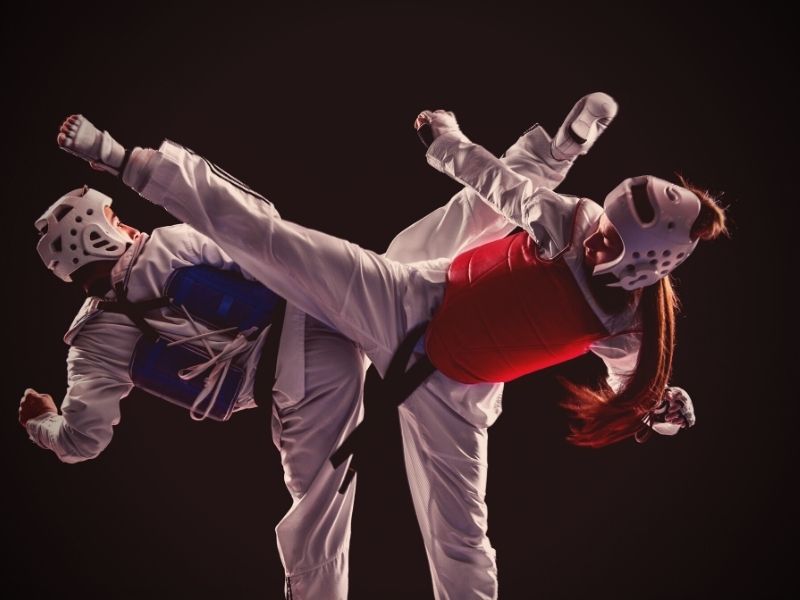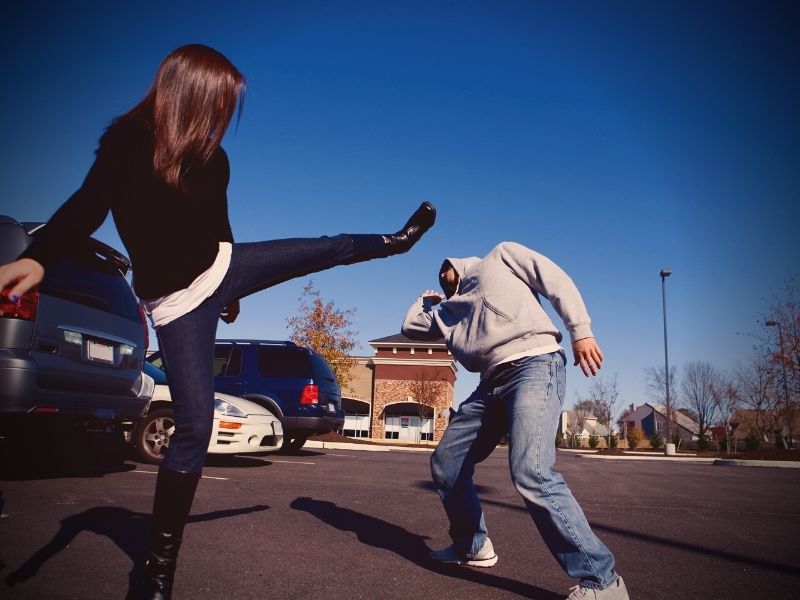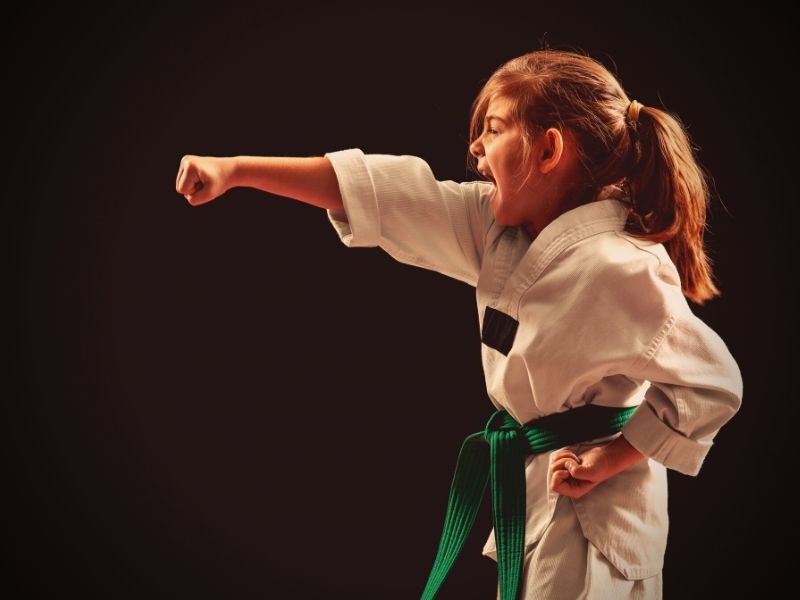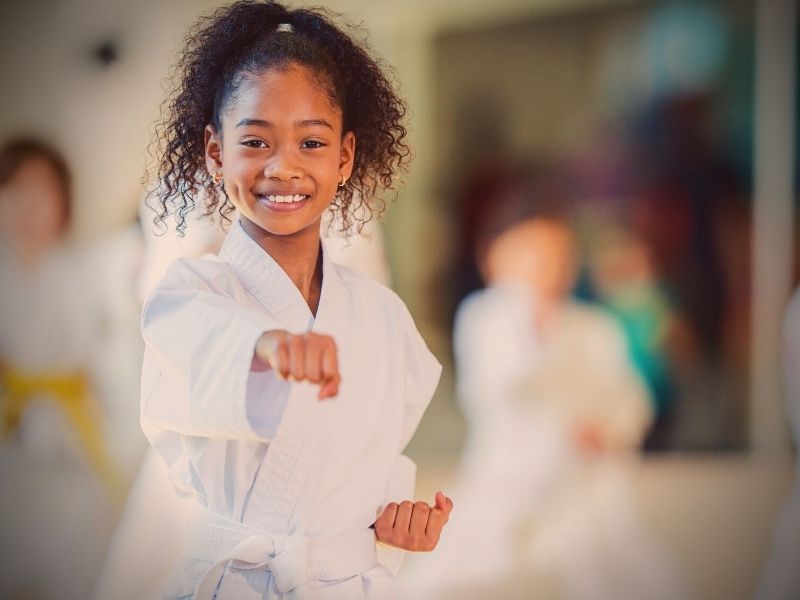
- What is This Martial Art? Everything You Need To Know About Taekwondo
- Where Does Taekwondo Come From? What’s The Story?
- Benefits of Taekwondo
- How to get started in Taekwondo
- What To Expect In Your First Taekwondo Class
- Different Taekwondo Ranks And Levels
- The Importance of A Good Taekwondo Instructor
- Taekwondo Movies and Figures
- The Wrap-Up
Are you curious about Taekwondo? If you are, then fantastic! Trust me when I say you're making the right call. If you're eager to learn more about it, then this post has got you covered.
First, we'll define what Taekwondo actually is and where it comes from. Then once we're done with that, we'll delve into the numerous advantages of practicing this art, ranging all the way from improved physical fitness to increased self-awareness.
We'll explore the ins and outs of this incredible martial art, including its origin and benefits, and provide practical tips on how to get started. We'll also discuss what to expect in your first class, the various levels and ranks, and why finding a good teacher or class is crucial.
And if you're ready to take the leap and try it out, we'll offer some guidance on how to find the right class and what to expect in your initial training.
So without any further ado, let's jump right into it!
What is This Martial Art? Everything You Need To Know About Taekwondo

Taekwondo is a Korean martial art that emphasizes kicking and punching techniques. It is one of the most popular martial arts in the world, with millions of practitioners worldwide.
Taekwondo is often practiced as a sport, but it can also be used for self-defense. The word “taekwondo” literally means “the art of the foot and fist.”
Taekwondo is characterized by its fast and powerful kicks. Although it's a fairly recent martial art, it is believed to have roots in the ancient tribes of Korea, who used it for hunting and combat.
Taekwondo was formalized as a discipline in the 1950s, and it has since spread to many other countries.
There are four main styles of Taekwondo: Traditional, World Taekwondo, ITF, and ATA style. Taekwondo competitions are governed by the World Taekwondo Federation (WTF), which sets the rules for sparring and other aspects of the sport.
Taekwondo training typically includes a combination of physical conditioning, technique drills, and sparring.
Students usually progress through a series of colored belts as they learn and master new techniques. The black belt is the highest rank in taekwondo, and achieving this rank requires dedication and hard work.
You can be interested in Taekwondo for sport, self-defense, or simply as a way to stay fit, and this martial art will still be an enjoyable and rewarding experience regardless.
Taekwondo truly is one of a kind among martial arts, what with its massive emphasis on kicking techniques, and I've no doubt that its popularity will only continue to grow around the world.
Where Does Taekwondo Come From? What’s The Story?

Taekwondo is a martial art that was developed in Korea. It combines combat techniques, self-defense, and sport, and brings them all into one clean package.
The name “taekwondo” itself is composed of three Korean words: 태 (tae), which means “to strike or break with the foot;” 권 (kwun), which means “to strike or break with the hand;” and 도 (do), which means “the way” or “the art.”
You can probably pick up the pieces from there. Taekwondo can be translated as the “way of striking with the foot and hand.”
It originated from the traditional Korean martial arts of taekkyeon and subak, and it received influences from Japanese and Chinese martial arts.
Taekwondo became increasingly popular in the late 1950s and early 1960s, mostly due to its emphasis on kicks, which set it apart from other martial arts at the time.
Taekwondo emphasizes physical fitness, discipline, and the cultivation of a strong mind and spirit. Practitioners focus on kicks, blocks, punches, and strikes with the hands and feet, but they also learn joint locks and throws.
Taekwondo has been an Olympic sport since 2000, with sparring being its main event.
Benefits of Taekwondo

Kung Fu is a martial art that offers a variety of benefits, both physical and emotional. Practicing Kung Fu can help individuals improve their discipline, increase their strength and stamina, and enhance their physical conditioning.
These are only some of the standard benefits that many Kung Fu--and martial arts practitioners in general--enjoy.
But the emotional benefits of Kung Fu are equally important. Kung Fu can help individuals develop self-confidence and learn how to handle difficult situations with poise and control. It can also provide a sense of empowerment when it comes to protecting oneself and loved ones.
And finally, practicing Kung Fu can improve one's ability to handle stress and difficult emotions, making it an excellent practice for overall emotional well-being.
How to get started in Taekwondo

Starting your journey in Taekwondo can be both exciting and overwhelming. However, with the right mindset and approach, you can make the most out of your training experience.
To begin, it's essential to research various Taekwondo schools and find one that resonates with your personal goals and beliefs.
Once you've identified a potential school, attend a trial class to get a feel for the atmosphere and instructors. This will give you an opportunity to gauge if the school is a good fit for you.
Next, focus on learning the basic techniques, principles, and forms of Taekwondo under the guidance of a qualified instructor. Consistent practice is key to developing your technique and understanding of Taekwondo principles.
In addition to regular practice, challenging yourself through attending workshops and seminars, sparring with other practitioners, and seeking new opportunities for growth within the Taekwondo community will accelerate your progress.
Watching and studying Taekwondo masters can also be a great source of inspiration and new insight into the art. Remember to approach your practice with humility and an openness to learning, as Taekwondo is a journey of continuous improvement and self-discovery.
What To Expect In Your First Taekwondo Class

In your first Taekwondo class, you can expect to be welcomed into a supportive and encouraging environment.
Taekwondo is an exciting and dynamic martial art that will seriously challenge you physically and mentally, but it will also reward you for every ounce of effort you put into it.
Your first class will almost certainly start with a warm-up, done to get your body ready for the exercises and techniques that you'll be learning for the day. That'll include stretching, cardio, and strength training exercises.
You shouldn't underestimate these, trust me. You should expect to sweat loads and to feel pretty intense burning sensations in your muscles, as a result of heavy lactic acid build-up in your body. But don't worry, that's all part of the process!
After the warm-up, your instructor will introduce you to the basic techniques and movements of Taekwondo. That'll include things like punches, kicks, and blocks, and eventually, they'll involve practicing with a partner.
If this sounds intimidating to you, then don't worry too much! Your instructor will guide you through each step and provide feedback to help you improve.
Finally, your first class will end with a cool-down and stretching session, done both to help prevent injuries and aid you in your recovery. Your instructor may even take some time to answer any questions you have about Taekwondo, as well as what you should expect in future classes.
So in your first Taekwondo class, you should expect to be challenged, learn new skills, and be surrounded by supportive and like-minded individuals. Things'll be tough, absolutely, but it'll be a deeply enjoyable experience too--of that, I can almost guarantee you.
Different Taekwondo Ranks And Levels

The rank system in Taekwondo is fairly complex, with 10 ranks ranging from 10th dan (white belt) to 1st dan (black belt). There are also a number of higher ranks called "master" ranks which are not awarded by most organisations.
Promotion between the ranks is usually based on a combination of time served and ability, with black belts often required to pass exams in order to be promoted to the next rank.
In some organisations, however, a black belt can be promoted straight to a master rank without having to go through all the lower ranks.
There are two main Taekwondo organisations--WT and ITF--and they have different standards when it comes to belts.
The WT organisation has 11 ranks, where belt colors are: white (11th dan), yellow, orange, green, purple, blue, blue and black, brown, brown and black, red, red and black, and black (1st dan).
In the ITF organisation, there are only 10 ranks, with the same belt colors as in the WT organisation. The difference is that the ITF organisation doesn't have a rank of brown and black – instead there is a rank of "red belt".
So overall there are 21 different rank levels in Taekwondo: 11 in the WT organisation and 10 in the ITF organisation.
The Importance of A Good Taekwondo Instructor

When you first start learning Taekwondo, you should absolutely make sure to choose the right teacher. A good teacher will be patient and capable of explaining Taekwondo's myriad techniques clearly. They'll also be able to adapt their teaching methods to suit your individual learning style.
In addition, a good Taekwondo teacher will be able to motivate and encourage you to reach your full potential. With the right teacher, you will be able to progress quickly and enjoy learning Taekwondo.
But if you choose the wrong teacher, you may become discouraged and give up Taekwondo altogether. So it really is essential that you take the time to find a teacher who is right for you.
When you find the right teacher, you will be well on your way to becoming a skilled Taekwondo practitioner.
Taekwondo Movies and Figures
Some amazing movies with Taekwondo in them are:
- The King and the Clown (2005)
- Kickboxer (1989)
- Ong-Bak: The Thai Warrior (2003)
- The Grandmaster (2013)
- Double Impact (1991)
Each of these movies showcases the beauty and power of Taekwondo, as well as its potential for self-defense. They also demonstrate how Taekwondo can be a vehicle for character growth and personal empowerment.
And, just in case you wanted to do some more research, here are some notable figures who practice or have practiced Taekwondo:
- Arnold Schwarzenegger
- Chuck Norris
- Cameron Diaz
- Gisele Bundchen
The Wrap-Up

So! That's about all we've got for Taekwondo. As you've just read, this incredible martial art has tons to offer you.
It's got a rich history waiting for you to discover it and diverse techniques waiting for you to learn them. That's all on top of its excellent psychological benefits, excellent sense of community, opportunity to acquire self-defense skills, and an offer for overall improved physical fitness.
So if you're interested in exploring this ancient martial art, I'd highly encourage you to take the first step today. Start your journey towards becoming a Taekwondo practitioner!
You'll need tons of dedication and practice, definitely, but you might find that this amazing martial art can help you achieve more than you ever thought possible.
[author-box-jpx-fitness]
